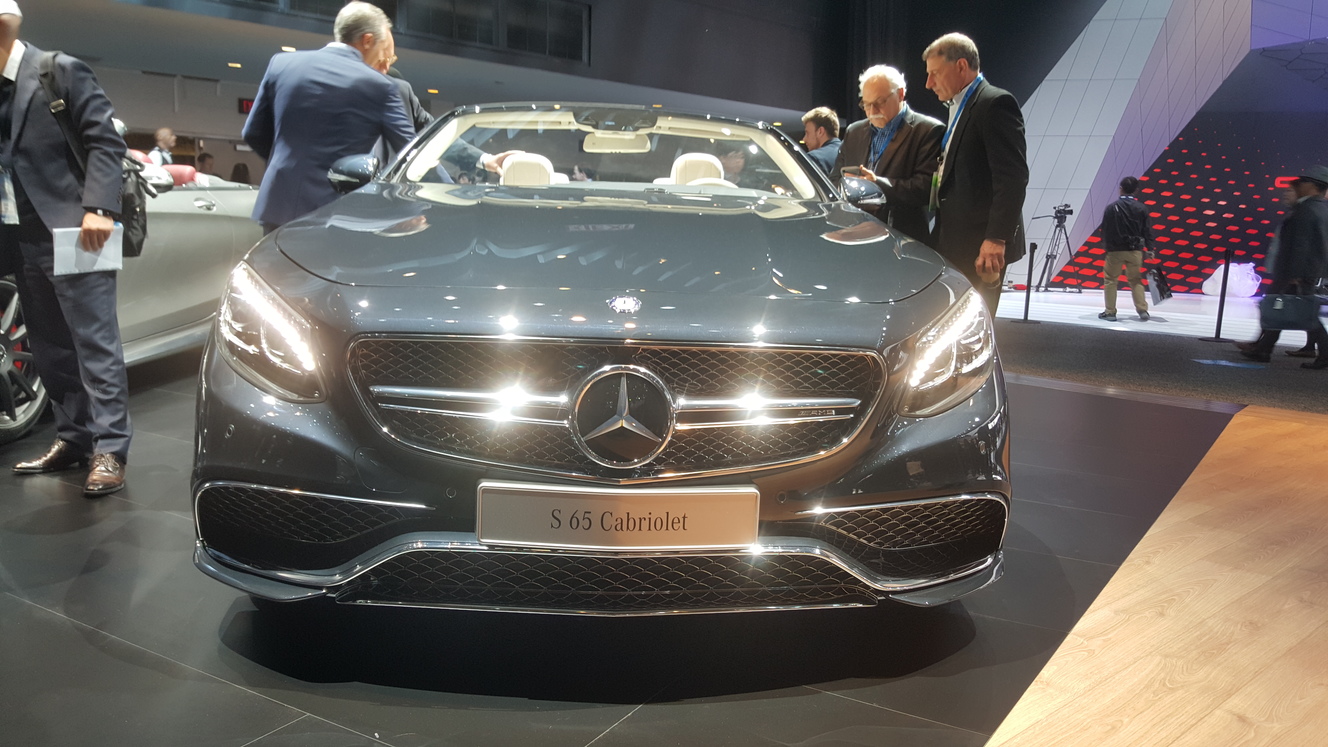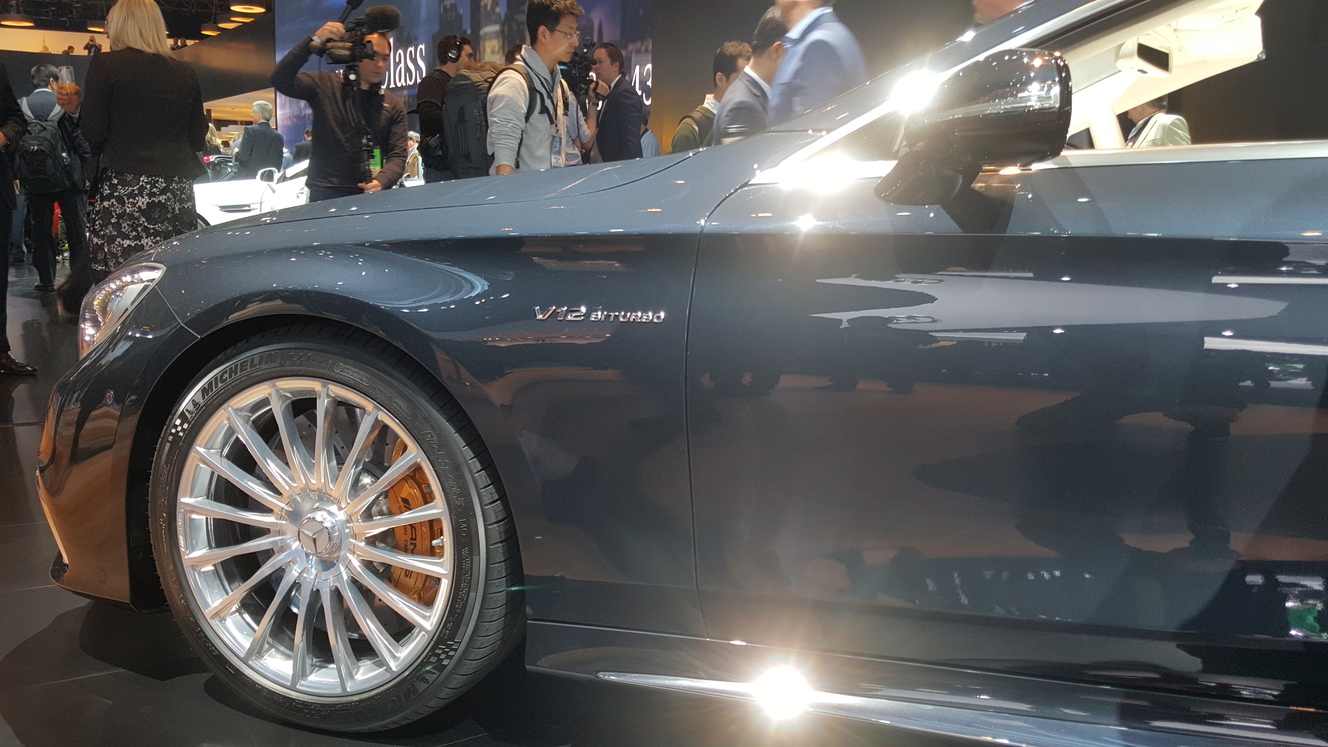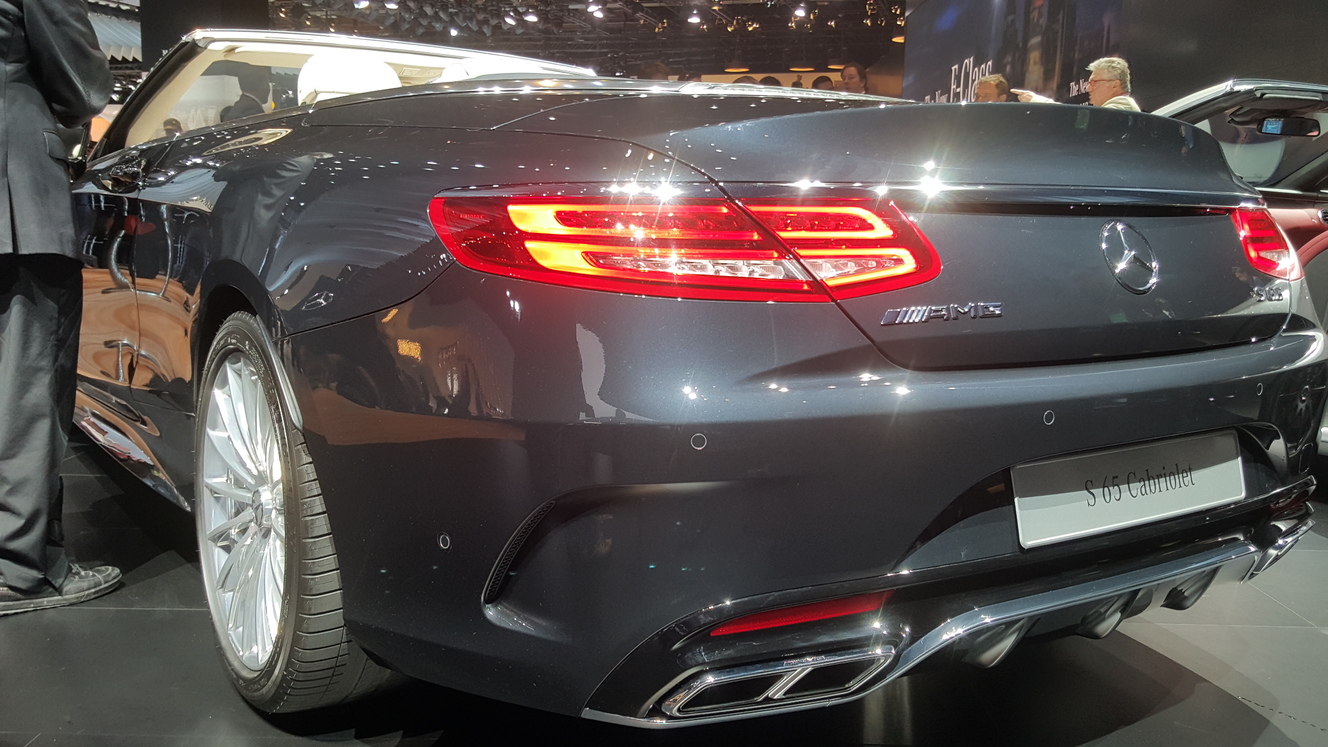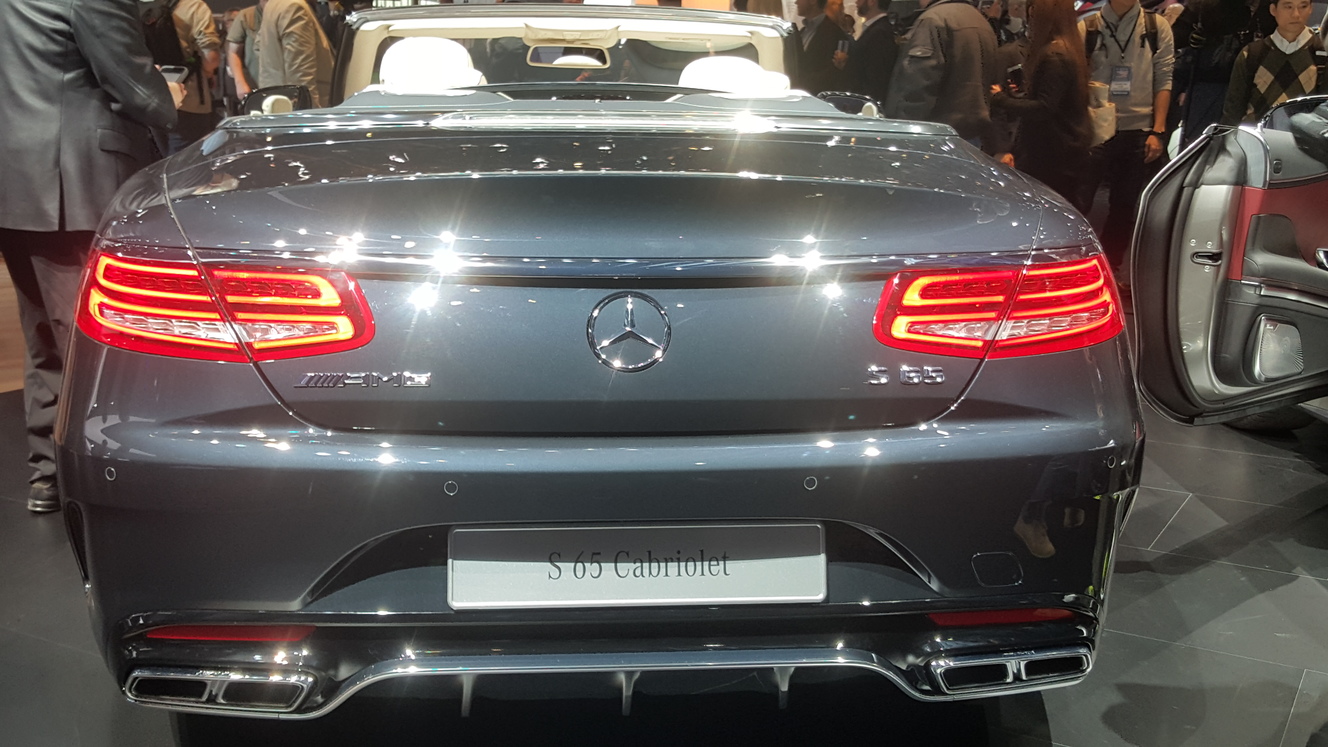Mercedes-Benz claims it invented the automobile when German engineer Karl Benz built the very first Benz Patent Motorwagen in 1886. To commemorate the occasion, the company has traveled to the Detroit Auto Show to introduce a limited-edition version of the S63 Cabrio appropriately dubbed Edition 130.
Offered exclusively in a special high-gloss color called alubeam silver, the Edition 130 stands out from the S63 on which it’s based thanks to 20-inch alloy wheels painted black, a burgundy cloth soft top, and red brake calipers. Mercedes explains it chose to build the Edition 130 on the S63 Cabrio because the first cars manufactured by Benz and Gottlieb Daimler, his business partner, were open-top four-seaters.
Inside, Mercedes has added two-tone red and black designo nappa leather upholstery as well as carbon fiber and piano black accents on the dashboard, the center console, and the door panels. Every Edition 130 comes with a custom-made car cover, and a center console-mounted plaque engraved with the car’s serial number lets the passengers know they’re not sitting in a run-of-the-mill S63.
Mercedes-AMG hasn’t made any mechanical modifications. In other words, the Edition 130 is powered by a hand-built, twin-turbocharged 5.5-liter V8 engine that delivers 577 horsepower at 5,500 rpm and 663 pound-feet of torque from 2,250 to 3,750 rpm. Bolted to a seven-speed automatic transmission that spins all four wheels, the eight-cylinder sends the S63 from zero to 62 mph in 3.9 seconds and on to a top speed that’s electronically limited to 155 mph.
The Mercedes-AMG S63 Cabrio Edition 130 is scheduled to go on sale in its home country of Germany this April with a base price of €226,457, a sum that converts to approximately $246,850 at the current conversion rate. U.S.-specific pricing and availability will be published in the coming weeks. Production will be limited to — you guessed it — 130 examples.
Editors' Recommendations
- 2024 Mercedes-AMG S63 E Performance first drive review: high-performance plug-in
- Mercedes-Benz EQE SUV first drive review: ’90s look, cutting-edge tech
- U.S. customers will have to wait another year for Mercedes’ electric EQC
- Mercedes-Benz’s electric EQC is one of the most affordable cars in its segment
- Mercedes-Benz wades into the micromobility fray with its first electric scooter










